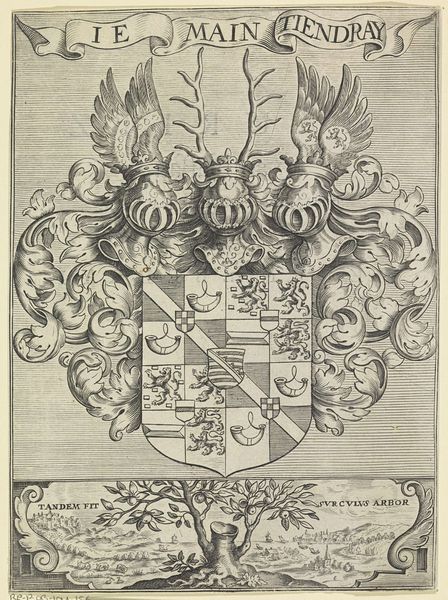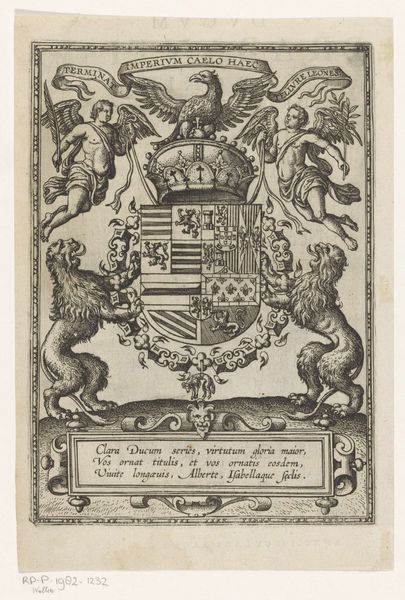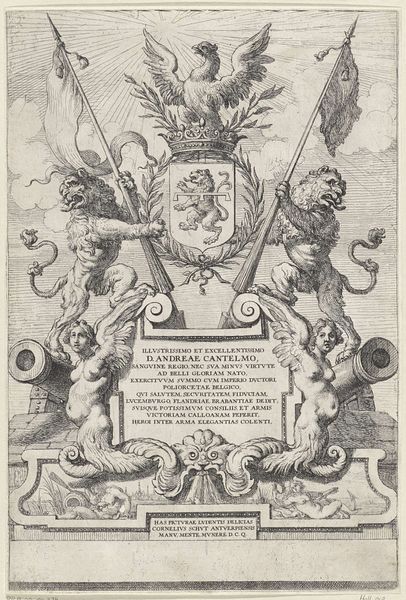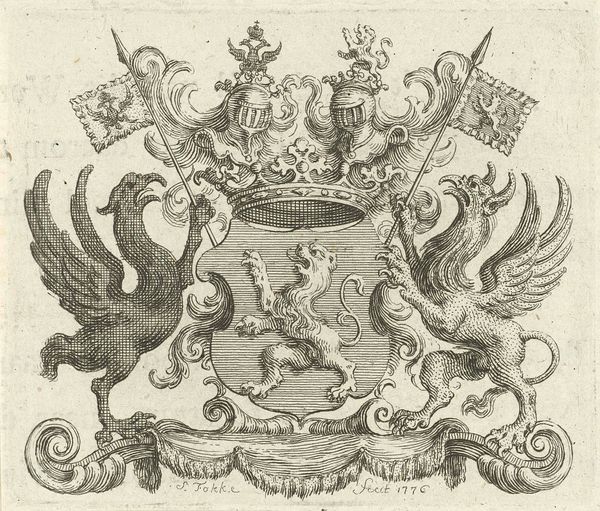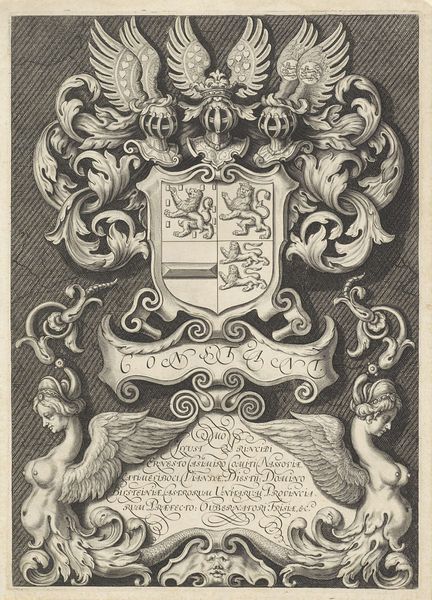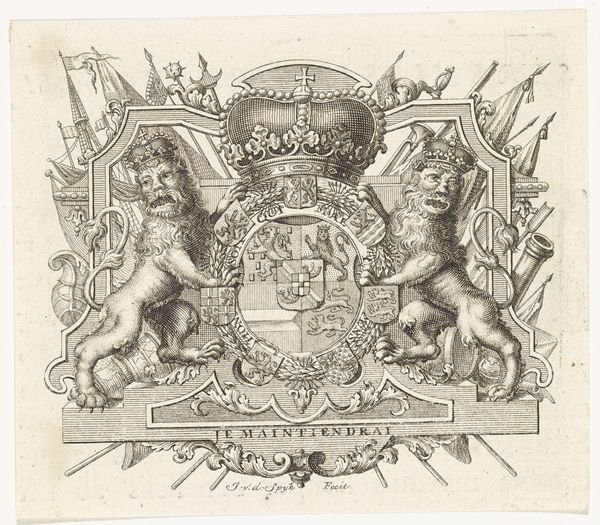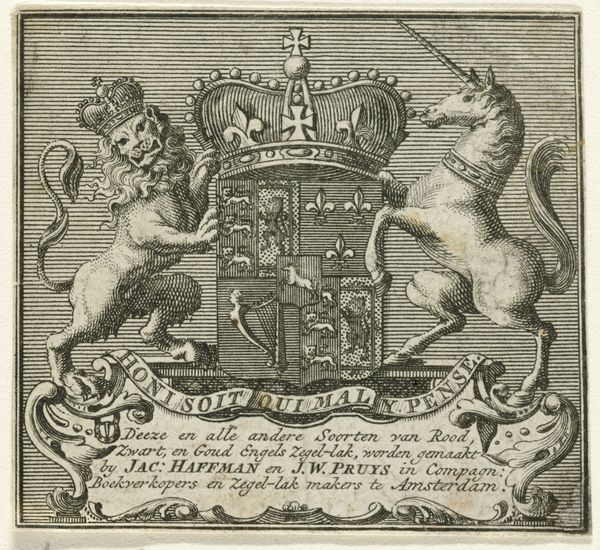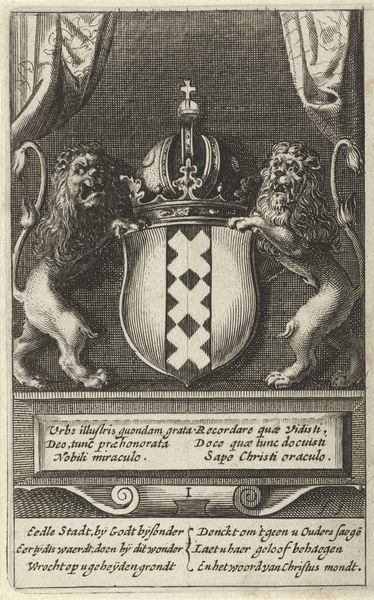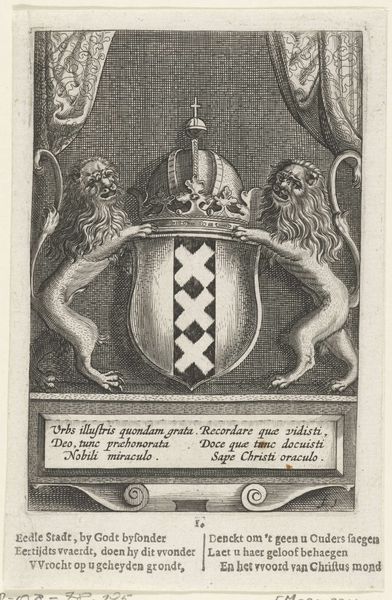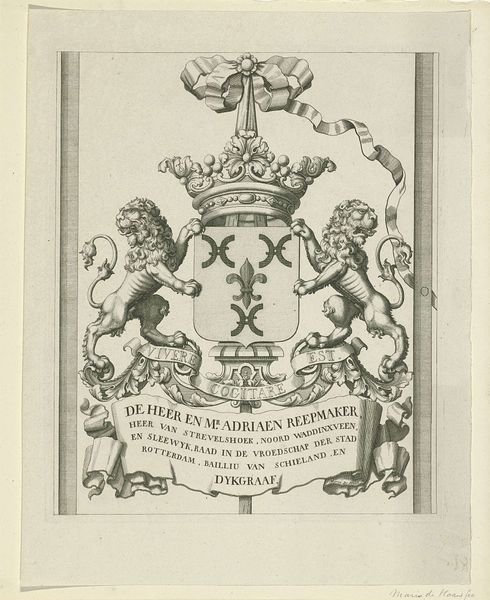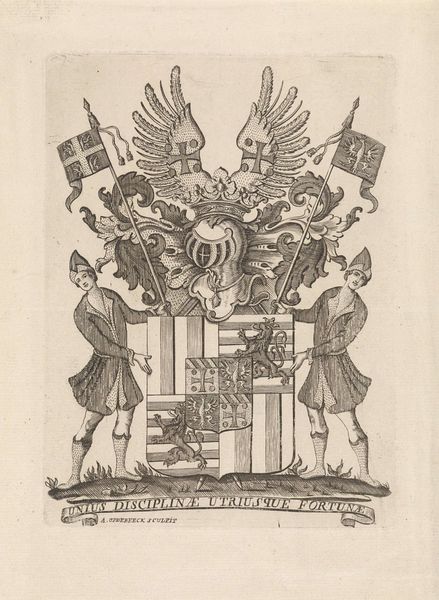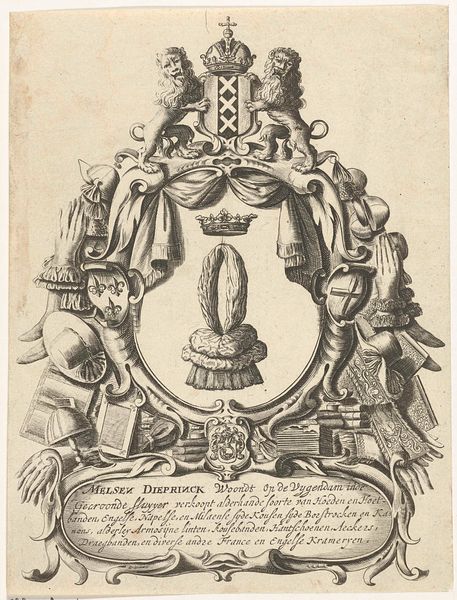
print, metal, engraving
#
baroque
#
pen drawing
# print
#
metal
#
pen illustration
#
old engraving style
#
line
#
history-painting
#
engraving
#
calligraphy
Dimensions: height 169 mm, width 124 mm
Copyright: Rijks Museum: Open Domain
Curator: We're looking at the "Wapen van Maarten Tromp" which roughly translates to "Coat of Arms of Maarten Tromp." It's an engraving, dating from somewhere between 1653 and 1699. Editor: My immediate impression is of authority. The detail, especially in the heraldic symbols and the surrounding flourishes, suggests a very precise kind of control. Curator: Exactly. Note the symmetrical arrangement of the shield, helmet, and the supporting creatures—the lions with the distinctive rose emblems on their shoulders. The engraving technique itself, the density of the lines, it all contributes to a sense of weight and permanence. The medium emphasizes the visual construction, the relation between positive and negative space. Editor: And consider the weight these symbols carry! The ship, for instance, denotes Tromp’s naval career and victories, which tie into themes of Dutch maritime power during the Golden Age. Then, of course, the fleur-de-lis atop the shield. That's a longstanding European emblem indicating sovereignty and royalty. Curator: Precisely. But observe how the artist deploys this emblem within a rigorously organized heraldic structure. It is as much a formal element—a carefully placed shape—as it is a symbol of aristocratic power. Note also the calligraphy underneath the image which translates as: "Nobility is the only virtue." It encapsulates much of the cultural beliefs and social order of that era. Editor: Yes, I'm intrigued by how it frames Dutch identity. These maritime symbols reflect national pride and commercial might, even a certain defiance against rival empires. It all coalesce here within a set of carefully-arranged signs. It’s fascinating to decode. Curator: Absolutely, and what might seem rigid and formulaic becomes surprisingly dynamic through the detailed line work, consider its function, conveying not just information but also aesthetic pleasure through its visual language. Editor: I think understanding the layered meanings within these historical objects helps us connect with a culture. I mean, imagine how viewers then would respond to the symbolic program. Curator: Indeed, considering the elements and its cultural setting enriches its composition, creating an opportunity to understand this era's ideals through the syntax of visual representation. Editor: Well, I came away with a richer perspective, noticing the ways it embodies an attitude that extends beyond the purely formal.
Comments
No comments
Be the first to comment and join the conversation on the ultimate creative platform.
